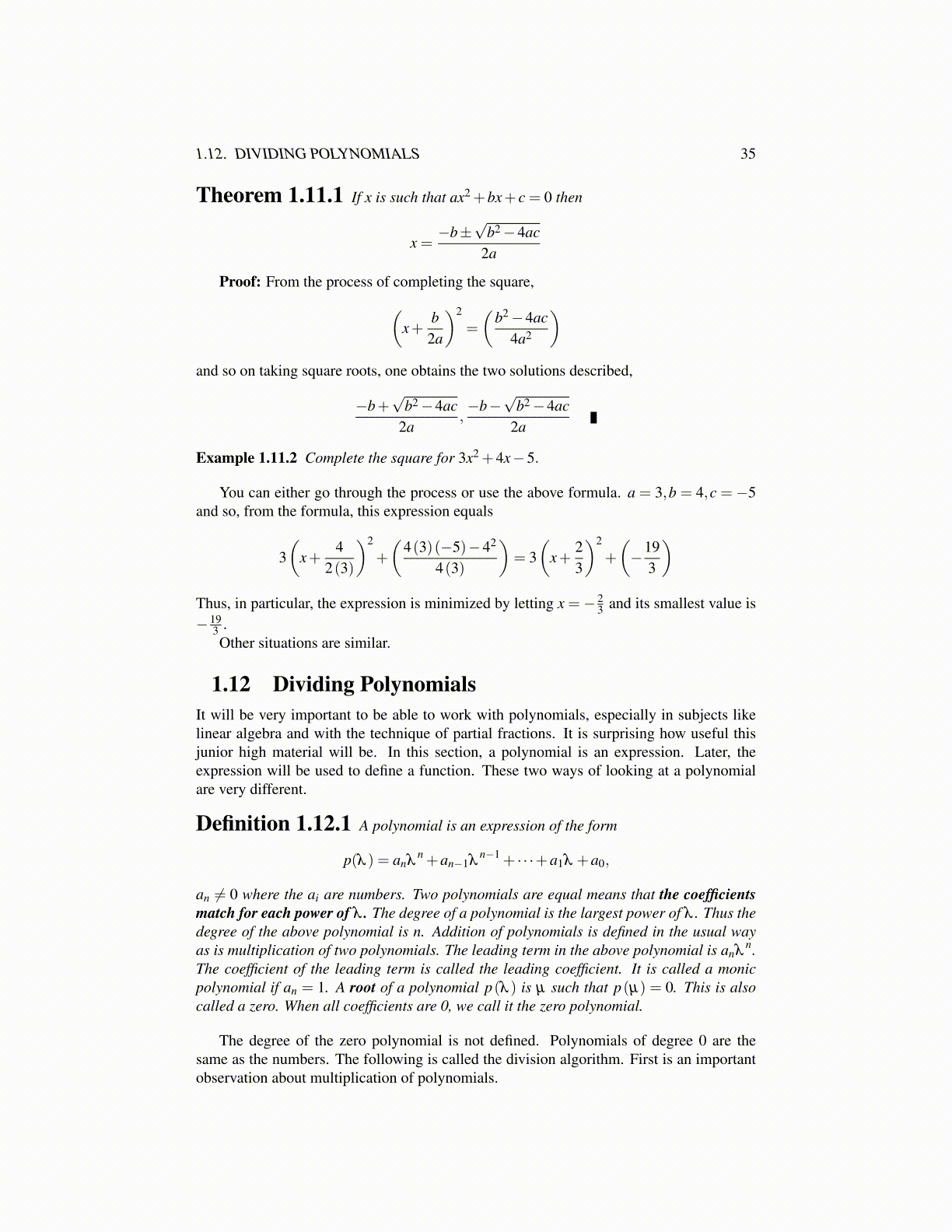
1.12. DIVIDING POLYNOMIALS 35
Theorem 1.11.1 If x is such that ax2 +bx+ c = 0 then
x =−b±
√b2 −4ac
2a
Proof: From the process of completing the square,(x+
b2a
)2
=
(b2 −4ac
4a2
)and so on taking square roots, one obtains the two solutions described,
−b+√
b2 −4ac2a
,−b−
√b2 −4ac
2a
Example 1.11.2 Complete the square for 3x2 +4x−5.
You can either go through the process or use the above formula. a = 3,b = 4,c = −5and so, from the formula, this expression equals
3(
x+4
2(3)
)2
+
(4(3)(−5)−42
4(3)
)= 3
(x+
23
)2
+
(−19
3
)Thus, in particular, the expression is minimized by letting x =− 2
3 and its smallest value is− 19
3 .Other situations are similar.
1.12 Dividing PolynomialsIt will be very important to be able to work with polynomials, especially in subjects likelinear algebra and with the technique of partial fractions. It is surprising how useful thisjunior high material will be. In this section, a polynomial is an expression. Later, theexpression will be used to define a function. These two ways of looking at a polynomialare very different.
Definition 1.12.1 A polynomial is an expression of the form
p(λ ) = anλn +an−1λ
n−1 + · · ·+a1λ +a0,
an ̸= 0 where the ai are numbers. Two polynomials are equal means that the coefficientsmatch for each power of λ . The degree of a polynomial is the largest power of λ . Thus thedegree of the above polynomial is n. Addition of polynomials is defined in the usual wayas is multiplication of two polynomials. The leading term in the above polynomial is anλ
n.The coefficient of the leading term is called the leading coefficient. It is called a monicpolynomial if an = 1. A root of a polynomial p(λ ) is µ such that p(µ) = 0. This is alsocalled a zero. When all coefficients are 0, we call it the zero polynomial.
The degree of the zero polynomial is not defined. Polynomials of degree 0 are thesame as the numbers. The following is called the division algorithm. First is an importantobservation about multiplication of polynomials.